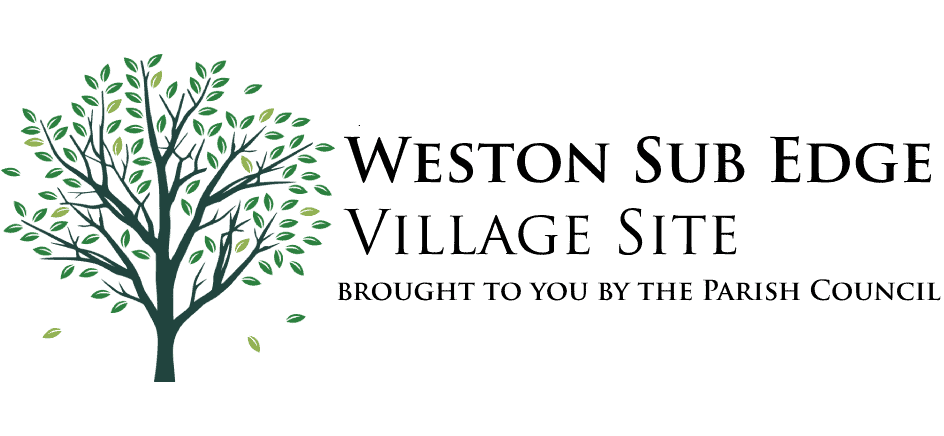Village history
Weston-sub-Edge
Population 431 (2011 census) This Cotswold village, recorded in Domesday, lies at the foot of Dovers Hill. Named after Robert Dover who organised his ‘Olimpick’ Games there from 1612, it is a well-known beauty spot with extensive views over the surrounding countryside. The Games, held annually, were revived in 1966. The Bowling Club, formed in 1987, has adopted certain features – their blazer badge is the silver castle (presented then as a prize in some events) while Robert Dover can be seen on the men’s ties. The designs are taken from the frontispiece to the “Annalia Dubrensia”, a book of poems written in praise of Robert Dover and published in 1636. The hill was gifted to The National Trust in 1926 and lies within the Cotswold AONB.
The Romans occupied Weston from the 2nd Century AD, a date based on coins and pottery found in the village. Their Ryknild Street (now called Buckle Street) forms the parish boundary with Saintbury and provided a link with Watling Street and The Fosse Way. Weston, said to have been a station for the Imperial Post, lies roughly halfway between Alcester and Slaughter Bridge, near Bourton on the Water, where Ryknild joins the Fosse. There are 3 listed Romano-British sites in the village, including one just below the Lynches Wood. It is said that the Romans grew their vines on the clearly defined terraces there, and walking along them on a fine sunny day this is easy to believe. Not far from the hill is the Kiftsgate Stone, the stone pillar marking the Kiftsgate Hundred. Here in Saxon times, the Court of the Hundred met and public announcements were proclaimed. The Stone can be seen on the boundary of Weston Park, almost 200 acres of ancient woodland, first sold from the Giffard Estate in 1610. It still remains in private hands. The village has some good stone houses, an old Post Office and a public house. The school, built in 1852, was closed in 1985.
The church is 13th Century and despite some restoration in the C19, still retains a number of its original features, including the altar which is just one large piece of stone measuring almost a yard wide and 11 feet long. The church was built by Godfrey Giffard, Bishop of Worcester. Squires of the village for some 400 years, the Giffards lived in the castle near the church, of which only the moated site now remains. It is believed to have been sacked during the Civil War and later the stone was used to build the walls of the village.
The Lych Gate is a memorial to the men of the village who lost their lives in the last two wars. In the churchyard the inscriptions on tombstones were first recorded in 1893 by J. Harvey Bloom, inscriptions he described as being “chiefly remarkable for their poetical character”. A later record was made in 1975 when his work was much valued due to the weathering of some stones in the interim.
The village hall, donated in 1930, was originally an old coach-house. It has since been extended.
In 1981 during building alterations, under the centre beam, what appeared to be a piece of old lead piping was found to contain a hoard of coins, 2 gold and 307 silver, the latest dated 1642. They can be seen in the Corinium Museum at Cirencester. Farming was the main occupation until the Second World War during which an aerodrome was built on the lower fields. The land has reverted to agricultural use and the buildings are used for other purposes including a small industrial estate.
Doris Court (October 2007)Read Doris Court’s book here
Old Weston-sub-Edge
The Old Post Office. Legend has it there was a Monk’s Hideaway in the chimney. The property is now known as Popfosters – named after Mr Jack Foster who kept the Seagrave Public House in the 50s.





